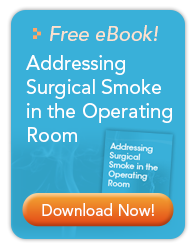 The term “energy-based devices” seems to be coming more and more popular, particularly in the medical industry as it relates to surgical devices. However, when we go on-line to look up “energy-based devices” we don’t find much. So, we thought we would put out a brief summary of what constitutes an “energy-based” device, particularly as it relates to surgical devices.
The term “energy-based devices” seems to be coming more and more popular, particularly in the medical industry as it relates to surgical devices. However, when we go on-line to look up “energy-based devices” we don’t find much. So, we thought we would put out a brief summary of what constitutes an “energy-based” device, particularly as it relates to surgical devices.
Cautery devices are heat energy based devices, and are probably the first ones we should address. Cauteries are usually small hand held, pen-light sized, battery operated devices that utilize a heated wire to physically touch selected tissues to seal blood vessels and stop bleeding. They have limited applications, but are inexpensive and effective in causing coagulation. Other specialty uses include relieving pressure on a smashed fingernail (subungual hematoma), or sealing the VAS in a vasectomy procedure.
Cryosurgery devices are cryogenic energy based and utilize liquid nitrogen to create a near absence of heat energy to destroy tissues by freezing. Nitrogen is most effective in a liquid state between -320 and -346 degrees F (-196 to - 210 degrees C) and application immediately reduces the tissue fluid temperature to as low as -120 degrees C (-248 degrees F) causing crystallization and cellular death. Cryogenic-energy based devices are primarily used for superficial applications and is most commonly used to remove skin lesions. Cryo devices range in style and temperature, some are pen-like devices while others are aerosol cans with detachable applicators.
Electrosurgical units (ESUs) are electrical energy devices that cause various tissue effects including cut, coagulation, and fulguration. This is done by employing the electrical energy to excite the cells, creating heat at the cellular level. The tissues create resistance to the flow of electricity, which is what causes the heat that results in the cut, blend and coagulation effects in either a monopolar or bipolar mode. The electrodes themselves are not hot and do not conduct heat. Fulguration (sparking) is a slightly different application. In this instance the electrode is held over the tissue without actually coming in direct contact with it and causes desiccation (drying) of the targeted superficial tissue. For a more in-depth discussion of the various aspects of electrosurgery see Understanding Electrosurgery. Electrosurgery units can be used in a variety of applications from simple skin procedures to complex surgical procedures and are a common device in most medical facilities.
Radiofrequency surgical units operate basically the same way that the electrosurgery units do, the difference being that instead of operating at roughly the 500 kHz radio frequency range (the lower end of the AM radio range), they operate at the 4.0 mHz range which is within the range of the Short Wave and Citizens Band radio band width. Clinically, these units are capable of performing the same procedures as an ESU.
Lasers have to be the most popular light energy based device. The use of laser surgery has become particularly popular in the field of eye surgery for LASIK and LASEK procedures. The laser beam can be focused to an extremely small size allowing it to vaporize very thin tissue layers without damaging adjacent tissues. The effect on tissue is very similar to that of ESUs in that it vaporizes cellular water content in soft tissue providing a “cut” function and also promotes blood coagulation. On hard tissue, like bones, it can be used for resurfacing.
Microwave energy based medical devices are more recent additions to the field of energy based devices and are used, primarily, for ablation and cancer treatment. Again, these devices create a thermal effect on the tissues at the cellular level and cause vaporization of cellular fluid and coagulation.
Radiation energy based medical devices use focused radioactive waves to penetrate beneath surface tissues to destroy underlying malignant cells. We mention it here because it represents an energy based procedure that destroys tissues, but it is not really a surgical device.
Ultrasonic devices such as the Harmonic Scalpel are sound energy based. Most ultrasonic devices are primarily used for imaging purposes. However, with focusing, the sound waves can increase the temperature of target tissues causing dehydration and removal of cellular fluid. Ultrasonic applications have been employed in the cutting and coagulating of tissue similar to a Bovie device, however this technique is said to take longer to cut and coagulate and can be hard to maneuver.
Plasma energy based devices are a recent addition to the field of energy based surgical devices. This plasma is created by passing a stream of gas, such as argon or helium, over a metal blade within an electronic field. The metal blade can be extended for physical cutting or retracted leaving the cutting effect to be done by the plasma stream itself. For free downloadable resources on a plasma energy based device offered by Bovie see J-Plasma: Your Questions Answered, J-Plasma vs.Electrosurgery, J-Plasma vs. Laser and Understanding the New J-Plasma Technology.
Bovie Medical Corporation is a proud manufacturer of cauteries, electrosurgical units, plasma energy devices and other equipment items for use in the O.R., ambulatory surgery centers, physician offices and veterinary clinics.




